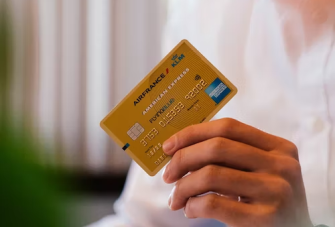5 Great Business Pricing Strategies
Knowing how to price your products and services can be one of the toughest parts of managing a business. If you set your prices too low, you won’t be able to make a profit. If you set them too high, you might turn people off your product. Get your business’s pricing strategy right, though, and you’ll be able to draw more people to your business with a well-valued product.
How do you arrive at that perfect price for your product? There are no hard and fast rules, but there are some pricing strategies that you can experiment with to see how close you can get.
Here are 5 of the best business pricing strategies.
1.Market penetration pricing
Imagine you’ve studied your Ansoff matrix and decided that you’re dead set on a market penetration strategy. You’ve decided you want to attract customers to a new product or service. So, how do you do this? A market penetration pricing strategy would mean offering a lower price to get as much interest as you can.
With this pricing strategy, the idea is to go as low as you can go to drum up interest in your product or service. You can see this strategy at work when companies entering new markets offer lower prices, special discounts on their products, or free monthly trials. Then, once their customers are hooked, they can raise your prices to get more profits.
One good example of a good market penetration pricing strategy is used by Gillette [1]. Gillette sells their razors at a very low price, bringing awareness to its brand and capturing a big slice of the market. What money they lose in selling razors, though, they make up in selling extra razor blades, accessories, and attachments, which are priced at a premium.
There are risks to this strategy, though. You may attract customers with low prices, but if that’s the only thing you have going for you, you’ll lose people fast if you start raising prices too quickly or start charging too much for add-ons.
2.Premium pricing
Did you know that pineapples used to be a sign of wealth and prestige? It’s true - it’s the reason why you can see carvings of pineapples on the tops of plinths and columns all over stately homes in Europe throughout the 16th and 17th centuries [source].
Why is this the case? During this time, pineapples were incredibly exotic and, more importantly, scarce in Europe. They were so hard to grow and transport that the price of a pineapple was incredibly high. And when pineapples became easier to grow and transport in the mid-19th century, their price came down, and so did their association with wealth.
The connection between scarcity, price and quality still exists for some people. It’s a well-known phenomenon that people’s experience of a product or service is intimately connected with how much they paid for it [source]. If you buy two bottles of juice, one juice being $3 and the other being $9, most people are likely to report that the $9 juice tastes better, even though they may be identical products.
The idea behind a premium pricing strategy is to price your product or service higher than those of your competitors, making them feel as if what they’re buying is of a higher quality.
If you’re successful, premium pricing will increase your profits. Your pricing strategy will also increase your brand value, heightening your company’s reputation and the impression of your product portfolio.
However, a premium pricing strategy can backfire if your product or service doesn’t have a distinct USP to justify the price. Depending on your product or service, a premium strategy may also price you out of the market you’re trying to enter.
3.Economy pricing
Economy pricing takes low price to the next level. Whereas a market penetration strategy keeps prices low for a period of time, economy pricing keeps prices low permanently.
Economy pricing works because it keeps prices low to undercut your competitors. The cola brand RC Cola is a great example of economy pricing. RC Cola is successful because they brand themselves as the affordable version of Coca-Cola, with their cola coming in at almost half the price of their competitor and offering similar quality [source]. The idea behind the strategy is to undercut branded products to let the customer feel as if they’re getting a deal.
Economy pricing is achieved when you have a product that has low production costs. You sell it at a price that undercuts generic brands but still gives you a profit. However, because the profit generated from this strategy is so low, the only way to make it work is to sell in volume.
It’s difficult to make an economy pricing strategy work if you don’t have the capacity for volume or if your company doesn’t have any brand recognition. Entering a new market with an economy pricing strategy and no brand awareness can negatively affect your product’s reputation, as customers may associate your lower price with lower quality. If this is the case for your company, you might want to check out our resources on business growth strategies.
4.Price skimming
Have you ever bought a new computer? If you have, you’re likely to have been annoyed when, very soon after that sale, the company starts dropping the price of the model you bought.
This is called price skimming and is used often in sectors like tech, where innovation is high and obsolescence is guaranteed. The longer a particular model of computer is around, the more likely it is to be overshadowed by new versions. So, in order for companies to keep selling their products, they need to lower the price in order to offset the drawback of buying an item with parts that aren’t up-to-date.
You often see price-skimming at work in supermarkets. Many supermarkets sell perishable goods. These goods are only good for a limited period, and the closer they are to their expiry date, the less likely people are to buy them. So, supermarkets usually cut the prices of these perishables in order to give customers an incentive to buy them.
5.Psychology pricing
Have you ever bought something thinking you got a good price but, upon review, you realize you didn’t? It’s nothing to do with the product or service itself and all to do with the customer’s experience of a price that they see.
Psychology pricing is the practice of setting a price lower than the original price but doing it in a way that makes the product or service seem less expensive than it actually is. It’s why some items are priced at $0.99 rather than $1. Most people would find the $0.99 price far more appealing, even though there is little practical difference between the two prices.
Another psychology pricing strategy is to create artificial time constraints. Let’s say you go to the website of a clothing brand. When you arrive at the site, you see that they have a LIMITED TIME OFFER that ends in three days and prices are slashed to attractive levels. By including an artificial time constraint on the sale, you create a sense of urgency in the customer. They have to buy now before the sale runs out or else they miss out on the deal.
You can use all sorts of psychological pricing strategies to make your products and services a lot more attractive than they may be.
Managing your prices is easy on our POS
Pricing can be one of the trickiest things to get right in your business, so it shouldn’t be harder than it has to be.
With your very own dedicated Epos Now POS system, you can manage all aspects of pricing, inventory, sales, and purchases right from your POS screen.
- Track single item performance so you can forecast with accuracy
- Receive stock alerts so you never miss a selling opportunity
- Easily add, edit and bundle items to create new revenue opportunities
- Create automatic purchase orders so you never run out of stock
- Full barcode management. Import, update and manage 1,000s of products
Contact Epos Now to learn more about our systems.




